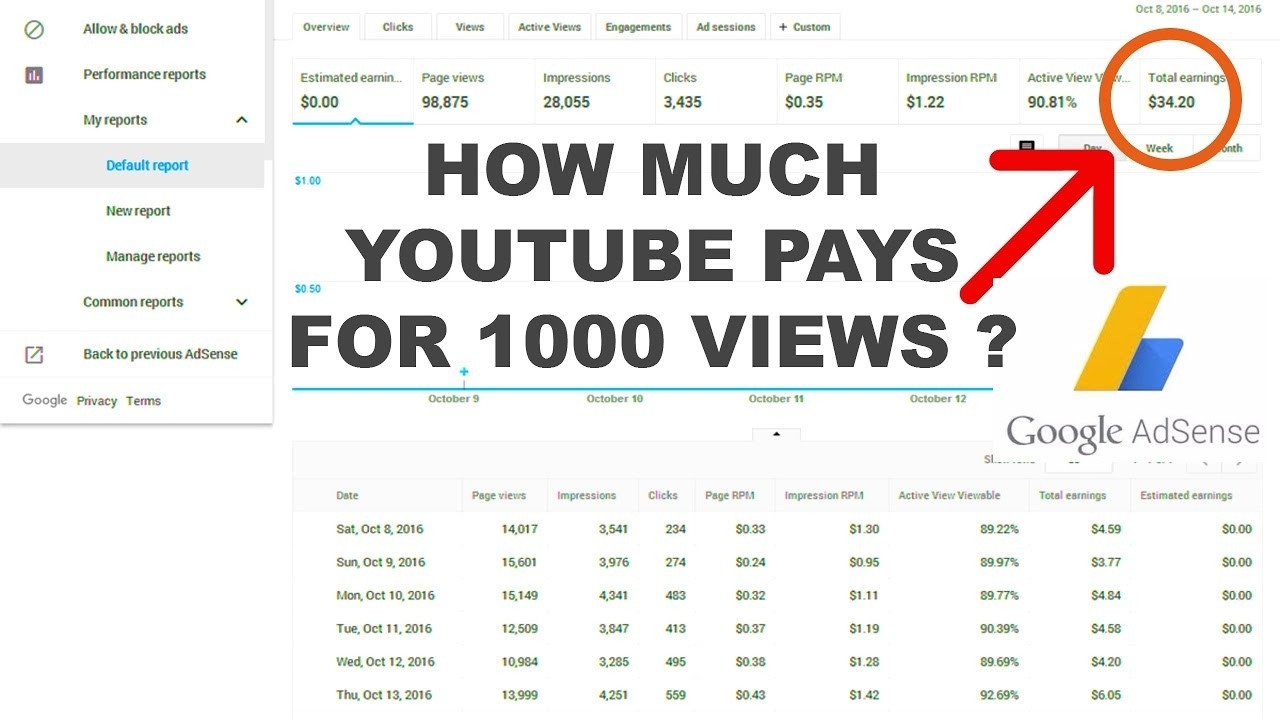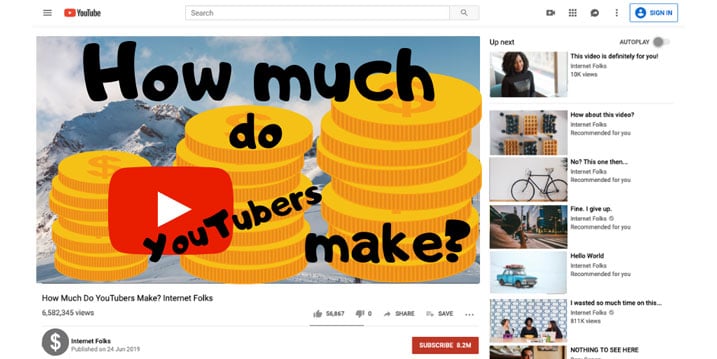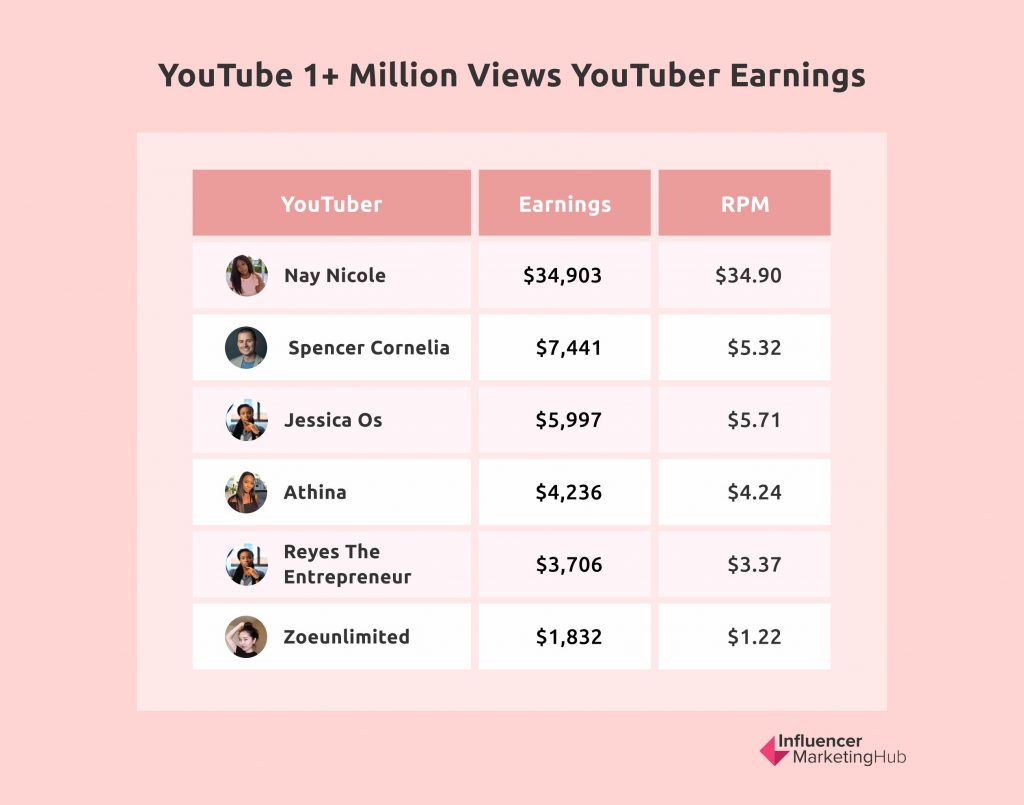Monetizing Your Passion: Understanding YouTube’s Partner Program
YouTube’s Partner Program (YPP) is a crucial step for creators who want to monetize their content on the platform. To be eligible for the YPP, creators must meet YouTube’s requirements, which include having at least 1,000 subscribers and 4,000 watch hours in the past 12 months. Once accepted into the program, creators can start earning money from their videos through ads, sponsorships, and merchandise sales.
The YPP offers various types of ads, including display ads, overlay ads, and video ads. Creators can earn money from these ads through the AdSense program, which pays creators based on the number of views and clicks on their ads. However, the amount of money creators can earn from AdSense varies widely depending on factors such as niche, audience engagement, and ad placement.
For example, a creator with a large following in a niche with high demand for ads, such as gaming or beauty, may earn more money from AdSense than a creator with a smaller following in a niche with lower demand for ads. Additionally, creators who produce high-quality, engaging content that resonates with their audience may earn more money from AdSense than creators who produce low-quality content.
While AdSense is a primary source of income for many YouTubers, it’s not the only way to monetize content on the platform. Creators can also earn money through sponsorships, merchandise sales, and affiliate marketing. Sponsorships involve partnering with brands to promote their products or services in videos, while merchandise sales involve selling products such as t-shirts, hats, or other items to fans.
Affiliate marketing involves earning commissions by promoting products or services of other companies and including affiliate links in videos or video descriptions. These alternative monetization strategies can help creators diversify their income streams and reduce their reliance on AdSense.
Understanding the YPP and its various monetization options is essential for creators who want to turn their passion into a sustainable income stream. By meeting YouTube’s requirements, creating high-quality content, and leveraging alternative monetization strategies, creators can increase their earning potential and build a successful career on the platform.
Factors Affecting YouTube Earnings: Views, Engagement, and Niche
When it comes to earning money on YouTube, several factors come into play. Understanding these factors is crucial to maximizing earnings and creating a sustainable income stream. One of the most significant factors affecting YouTube earnings is view count. The more views a video receives, the more money it can potentially earn from ads. However, view count alone is not enough to guarantee high earnings.
Engagement is another critical factor that influences YouTube earnings. Engagement metrics such as likes, comments, and shares can increase a video’s visibility and attract more viewers. Additionally, engagement can also impact the click-through rate (CTR) and cost-per-click (CPC) of ads, which can significantly affect earnings. For example, a video with high engagement may have a higher CTR and CPC, resulting in more money earned from ads.
Niche or topic is also a significant factor in determining YouTube earnings. Certain niches, such as gaming or beauty, tend to be more profitable than others due to higher demand for ads. Additionally, niches with a high audience engagement and loyalty can also lead to more significant earnings. For instance, a gaming channel with a large and engaged audience may earn more money from ads and sponsorships than a channel with a smaller audience in a less profitable niche.
Audience demographics also play a crucial role in determining YouTube earnings. Creators who cater to a specific demographic, such as young adults or parents, may earn more money from ads and sponsorships than creators who cater to a broader audience. Furthermore, audience demographics can also impact the types of ads displayed on a channel, which can affect earnings.
CTR and CPC are also essential metrics that influence YouTube earnings. CTR refers to the percentage of viewers who click on an ad, while CPC refers to the cost of each ad click. A higher CTR and CPC can result in more money earned from ads. However, creators should be cautious not to prioritize CTR and CPC over content quality, as this can lead to a decrease in engagement and earnings in the long run.
Understanding these factors can help creators optimize their content and strategies to maximize earnings on YouTube. By focusing on creating high-quality content that resonates with their audience, engaging with viewers, and leveraging their niche and audience demographics, creators can increase their earning potential and build a sustainable income stream.
Estimating YouTube Earnings: A Realistic Look at the Numbers
Estimating YouTube earnings can be a complex task, as it depends on various factors such as niche, audience size, engagement, and monetization strategies. However, by analyzing the earnings of successful YouTubers and understanding the factors that influence their income, we can get a realistic idea of how much money can be made on YouTube.
For example, a popular gaming channel with 1 million subscribers and 10 million views per month can earn around $50,000 to $100,000 per month from AdSense alone. However, this amount can vary greatly depending on the niche, audience engagement, and ad click-through rates. Additionally, sponsorships and merchandise sales can add tens of thousands of dollars to the channel’s monthly earnings.
A beauty channel with 500,000 subscribers and 5 million views per month can earn around $20,000 to $50,000 per month from AdSense. However, this amount can increase significantly if the channel has a strong engagement with its audience and partners with popular beauty brands for sponsorships.
A cooking channel with 200,000 subscribers and 2 million views per month can earn around $10,000 to $20,000 per month from AdSense. However, this amount can increase if the channel has a strong engagement with its audience and partners with food brands for sponsorships.
It’s essential to note that these estimates are based on averages and can vary greatly depending on the specific niche, audience, and monetization strategies. Additionally, YouTube’s algorithm changes and ad policies can also impact earnings.
To give you a better idea of how much money can be made on YouTube, here are some estimated earnings ranges for different niches:
- Gaming: $50,000 to $100,000 per month
- Beauty: $20,000 to $50,000 per month
- Cooking: $10,000 to $20,000 per month
- Travel: $5,000 to $10,000 per month
- DIY: $3,000 to $5,000 per month
Keep in mind that these are rough estimates and can vary greatly depending on the specific channel and its audience. However, by understanding the factors that influence YouTube earnings and analyzing the earnings of successful YouTubers, we can get a realistic idea of how much money can be made on YouTube.
Maximizing Earnings with YouTube AdSense and Sponsorships
To maximize earnings on YouTube, creators need to understand how to optimize their AdSense income and leverage sponsorships and product placements. AdSense is a crucial source of income for many YouTubers, but it’s not the only way to monetize content on the platform.
One of the most effective ways to increase AdSense earnings is to focus on creating high-quality, engaging content that resonates with your audience. This can include using attention-grabbing titles, descriptions, and tags, as well as optimizing your video’s metadata for better visibility in search results.
Another key strategy for maximizing AdSense earnings is to increase your click-through rate (CTR) and cost-per-click (CPC). This can be achieved by using eye-catching thumbnails, creating compelling ad copy, and targeting your ads to specific demographics or interests.
Sponsorships and product placements are also a great way to supplement AdSense income. By partnering with brands to promote their products or services in your videos, you can earn additional revenue and build relationships with potential sponsors.
However, it’s essential to note that sponsorships and product placements should be done in a way that is authentic and transparent to your audience. Viewers can spot a fake or forced endorsement from a mile away, and it can damage your credibility and trust with your audience.
To maximize earnings with sponsorships and product placements, focus on building relationships with brands that align with your values and audience interests. This can include reaching out to brands directly, using influencer marketing platforms, or working with a talent agency to secure sponsorship deals.
Additionally, consider using YouTube’s merchandise feature to sell branded merchandise to your audience. This can be a great way to earn additional revenue and build a loyal community of fans who are willing to support your channel.
By optimizing your AdSense income, leveraging sponsorships and product placements, and building a loyal audience, you can maximize your earnings on YouTube and turn your passion into a sustainable income stream.
Building a Loyal Audience: The Key to Long-Term Earning Potential
Building a loyal audience is crucial for long-term earning potential on YouTube. A loyal audience is more likely to engage with your content, share it with others, and support your channel through sponsorships and merchandise sales.
So, how can you build a loyal audience on YouTube? The first step is to create high-quality, engaging content that resonates with your target audience. This can include using attention-grabbing titles, descriptions, and tags, as well as optimizing your video’s metadata for better visibility in search results.
Another key strategy for building a loyal audience is to interact with your viewers. This can include responding to comments, answering questions, and engaging with your audience on social media. By building a relationship with your viewers, you can create a loyal community of fans who will support your channel over the long term.
Leveraging social media is also an effective way to build a loyal audience on YouTube. By promoting your channel on platforms like Twitter, Instagram, and Facebook, you can reach a wider audience and drive traffic to your YouTube channel.
Consistency is also key when it comes to building a loyal audience on YouTube. By regularly posting high-quality content, you can keep your viewers engaged and coming back for more. This can include creating a content calendar, using a consistent tone and style, and optimizing your videos for better engagement.
Finally, it’s essential to understand your audience and tailor your content to their needs and interests. By using YouTube Analytics to track your viewers’ demographics, interests, and engagement, you can create content that resonates with your audience and builds a loyal following.
By building a loyal audience on YouTube, you can increase your earning potential and create a sustainable income stream. Whether you’re a beginner or an experienced creator, building a loyal audience is key to long-term success on the platform.
Some popular strategies for building a loyal audience on YouTube include:
- Creating high-quality, engaging content
- Interacting with your viewers
- Leveraging social media to promote your channel
- Consistently posting high-quality content
- Understanding your audience and tailoring your content to their needs and interests
By incorporating these strategies into your YouTube marketing plan, you can build a loyal audience and increase your earning potential on the platform.
YouTube Analytics: Tracking Performance and Adjusting Strategies
YouTube Analytics is a powerful tool that helps creators track their performance and adjust their strategies to optimize their earnings. By using YouTube Analytics, creators can gain insights into their audience’s behavior, engagement, and demographics, which can inform their content creation and marketing strategies.
One of the most important metrics in YouTube Analytics is views. Views are a key indicator of a video’s popularity and can help creators understand how well their content is resonating with their audience. By tracking views, creators can identify which videos are performing well and which ones need improvement.
Engagement is another crucial metric in YouTube Analytics. Engagement metrics such as likes, comments, and shares can help creators understand how well their audience is interacting with their content. By tracking engagement, creators can identify which videos are sparking conversations and which ones are falling flat.
Earnings are also a critical metric in YouTube Analytics. By tracking earnings, creators can understand how much money they are making from their videos and identify areas for improvement. YouTube Analytics provides detailed information on earnings, including the amount of money earned from AdSense, sponsorships, and merchandise sales.
Audience retention is another important metric in YouTube Analytics. Audience retention refers to the percentage of viewers who watch a video from start to finish. By tracking audience retention, creators can understand how well their content is holding viewers’ attention and identify areas for improvement.
By using YouTube Analytics, creators can adjust their strategies to optimize their earnings. For example, if a creator notices that their views are low, they may need to adjust their title, description, or tags to improve their video’s visibility in search results. If a creator notices that their engagement is low, they may need to adjust their content to make it more interactive and engaging.
Some popular strategies for using YouTube Analytics to optimize earnings include:
- Tracking views and engagement to identify top-performing content
- Using audience retention to identify areas for improvement
- Adjusting title, description, and tags to improve video visibility
- Creating more interactive and engaging content to boost engagement
- Using earnings data to identify areas for improvement and optimize monetization strategies
By incorporating these strategies into their YouTube marketing plan, creators can use YouTube Analytics to optimize their earnings and achieve their goals.
Avoiding Common Pitfalls: Tips for Sustaining Earning Potential
While YouTube can be a lucrative platform for creators, there are several common pitfalls that can affect earning potential. By understanding these pitfalls and taking steps to avoid them, creators can sustain their earning potential over the long term.
One of the most significant pitfalls is algorithm changes. YouTube’s algorithm is constantly evolving, and changes can impact a channel’s visibility and earnings. To avoid this pitfall, creators should stay up-to-date with the latest algorithm changes and adjust their strategies accordingly.
Audience burnout is another common pitfall. When creators produce too much content or fail to engage with their audience, viewers can become disenchanted and stop watching. To avoid this pitfall, creators should focus on producing high-quality content that resonates with their audience and engage with viewers through comments and social media.
Inconsistent content quality is also a common pitfall. When creators produce low-quality content or fail to maintain a consistent schedule, viewers can lose interest and stop watching. To avoid this pitfall, creators should focus on producing high-quality content that meets their audience’s expectations and maintain a consistent schedule.
Another pitfall is neglecting to diversify income streams. While AdSense can be a significant source of income for creators, it’s essential to diversify income streams to reduce dependence on a single source of income. To avoid this pitfall, creators should explore alternative income streams, such as sponsorships, merchandise sales, and affiliate marketing.
Finally, creators should avoid neglecting to engage with their audience. When creators fail to engage with their audience, viewers can become disenchanted and stop watching. To avoid this pitfall, creators should focus on engaging with their audience through comments, social media, and live streaming.
Some popular strategies for avoiding common pitfalls include:
- Staying up-to-date with the latest algorithm changes
- Producing high-quality content that resonates with your audience
- Engaging with your audience through comments and social media
- Maintaining a consistent schedule
- Diversifying income streams
- Engaging with your audience through live streaming
By incorporating these strategies into their YouTube marketing plan, creators can avoid common pitfalls and sustain their earning potential over the long term.
Conclusion: Turning Your YouTube Passion into a Sustainable Income
Turning your YouTube passion into a sustainable income stream requires persistence, creativity, and adaptability. By understanding the basics of YouTube’s Partner Program, factors that influence YouTube earnings, and strategies for maximizing earnings, creators can unlock their earning potential and build a successful career on the platform.
Remember, building a loyal audience is key to long-term earning potential on YouTube. By creating engaging content, interacting with viewers, and leveraging social media to promote channels, creators can build a loyal following and increase their earning potential.
Additionally, using YouTube Analytics to track performance and adjusting strategies based on analytics insights can help creators optimize their earnings and achieve their goals.
Avoiding common pitfalls such as algorithm changes, audience burnout, and inconsistent content quality is also crucial for sustaining earning potential over the long term.
By incorporating these strategies into their YouTube marketing plan, creators can turn their passion into a sustainable income stream and achieve success on the platform.
In conclusion, the amount of money you can make on YouTube varies widely depending on factors such as niche, audience size, engagement, and monetization strategies. However, by understanding the basics of YouTube’s Partner Program, factors that influence YouTube earnings, and strategies for maximizing earnings, creators can unlock their earning potential and build a successful career on the platform.
So, how much money can you make on YouTube? The answer is, it depends. But with persistence, creativity, and adaptability, creators can turn their passion into a sustainable income stream and achieve success on the platform.







